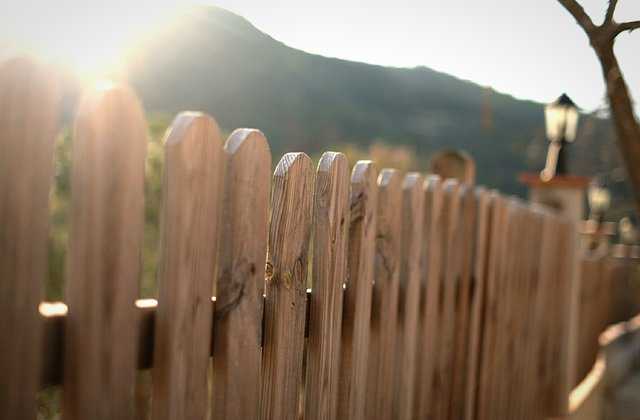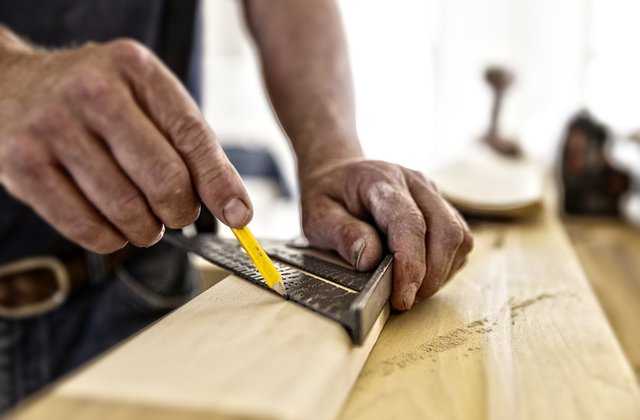
The idea of putting up a wall between the U.S. and Mexico may not be so popular with people, but plenty of homeowners want their own border wall – that is, a fence around their property. After all, you may have young kids or dogs who you'd like to keep from running out into the street. You might want to keep the neighborhood children out of your garden, swimming pool or off a backyard trampoline. You may want a fence for privacy. You might just like how a fence looks.
But there's a reason some people are reluctant to fence themselves in: Fences aren't cheap . If you're going to install one, there are several questions you'll want to ask yourself first.
[See: 25 Ways to Fix Your Finances Fast .]
What type of fence do I want, and what can I have? Unfortunately, what you want may not be what other people want. "Many neighborhoods do not allow fences, so it is best to double-check with your local deed restrictions to see what is allowed and where," says Frank Haun, a realtor with Bob Webb Homes, a custom homebuilder in Lewis Center, Ohio.
Cassy Aoyagi, co-founder and president of FormLA Landscaping, Inc., based out of Los Angeles, agrees. Whatever fence you get, she says, it needs to correspond with any community codes.
Beyond that, "Homeowners tend to be happiest with those that complement the design of their homes, personal style and the neighborhood," Aoyagi says. "As strange as it may seem, these are things people often forget to think through before building."
Bottom line: You should check beforehand and make sure there aren't rules forbidding a certain type of fence that you want to put up, because if you have to take it down or modify it later, you're going to be out a lot of money.
Can I afford a fence? The price depends on many factors, from your material, the length of your fence and, assuming you're hiring someone, how much a contractor charges you.
"An invisible fence can cost anywhere from $1,000 to $3,000 based on the size of the yard," says Haun. "An all-cedar or wood-based fence can be anywhere from $2,500 to $20,000."
So, start crying now. Well, actually, put away the handkerchief. You probably won't spend $20,000. According to the home services website, HomeAdvisor.com, the average homeowner spends $2,641 for a fence, according to data furnished from more than 15,000 members. The cheapest fences are metal or chain fences, costing $7 per foot (this doesn't include labor). Wood is, on average, $12 a foot, vinyl is $17 and aluminum averages at $26.
The numbers for your materials reported by another home services website, Angie's List, which is merging with HomeAdvisor, are quite a bit higher: $13 a foot for a chain-link fence; $16 a foot for wood; $30 a foot for vinyl; and $40 a foot for aluminum.
Whatever you pay, it will probably be more than you're thinking it would be . As for the actual installation costs, Angie's List suggests planning to pay $30 to $50 an hour on labor for several workers.
[See: 10 Ways to Feel Better About Your Money .]
Do you want to try and bring down the costs? Practically speaking, your options aren't too plentiful. If you can successfully install the fence yourself – possibly a herculean task if you aren't a do-it-yourselfer or if you have a really big yard – you'll probably cut the price of your fence in half. You could also choose to go with a thick type of foliage, like a hedge, instead that could serve as a barrier.
That's an eco-friendly decision, Aoyagi says. But she adds that it might take two or three years before the plants have grown enough to really serve as a proper barrier.
8 Summer Home Improvements to Start Now
Have you thought about the maintenance expense ? Fences may look like they require no work once they're put in the ground, but they usually require some upkeep. Depending on what you have, yours might rust or rot. If you don't maintain your yard, and you aren't careful with weeds, invasive plants and rogue trees that spring up, you could have the fence eventually overtaken and pushed aside in some areas. Aluminum fences have replaced iron and steel fences, but those can still get banged up and dented. Some wood fences will need to be stained every few years.
If you want something that won't give you much hassle in the coming years, "vinyl is fairly maintenance-free," Haun says.
Vinyl fences, in case you're wondering, often look like wood. If you want a white picket fence in your front yard, for instance, these days, it'll probably be made of vinyl.
[See: 11 Money Tips for Older Adults .]
And have you studied the property line? Pull out your deed and give it a careful review. For obvious reasons, you'll want to make sure your fence is actually on your property and not on a neighbor's land. Haun says that when he was having a home with an outdoor swimming pool built, the fence was put a foot outside of his property line.
"Our pool company caught the error, and the builder was liable to correct this issue before we closed on the home. Instead of moving the fence, the builder decided to move our property line and increase the size of our yard," Haun says.
But it doesn't always work out as well as it did for Haun. There are also other problem areas to consider beyond the property line. You're also going to be making several holes in your yard. You or your contractor will want to contact your utility companies, to make sure one of your fence posts isn't destined to puncture an underground water, gas or power line. If you cause a power outage , for instance, your neighbors will not be thrilled. Of course, you or your contractor may not be around to get their reaction.
So proceed cautiously. Don't rush the process, only to realize later that you made some big-time mistakes or that you wish you had gone with vinyl instead of aluminum. In other words, when you install a fence, don't wall yourself in.
6 Home Renovations You Think Will Pay Off – But Won't
Home Renovations You Think Will Pay Off – But Won't

Compare Offers
Compare Offers



Post a Comment